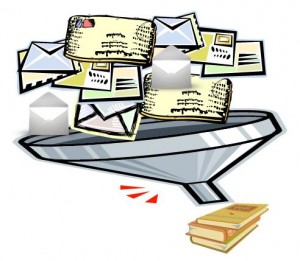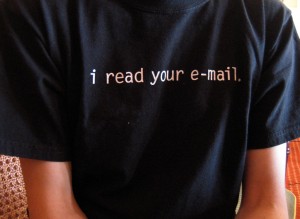Inbound Marketing: Unlock the content from your emails and social marketing
Think about how many emails you sent yesterday. Now think about how many your company sent yesterday — to customers and coworkers. Probably thousands of unique emails, right? That is a mountain of content, but little of it gets used for marketing.
I spoke last week with Chris Baggott, CEO and Co-Founder of Compendium (also co-founder of ExactTarget). During our discussion, Baggott pointed out two content-rich resources that marketers often overlook: their email marketing campaigns, and their social media profiles.
Marketing emails, for example, often tell a story or feature content that is not published elsewhere. The content is not indexed by search engines — but it could be if published online.
Also, the comments and conversations on your Facebook profile typically never escape the walled garden. But you can grab that content and incorporate it into your marketing.
“We’re working on breaking down content silos to be able to pull content from anywhere and distribute content anywhere,” Baggott says.
Here are some examples Baggott provided of how some companies are breaking down content silos and combining email marketing, social marketing, natural search and content marketing:
Publishing emails for long-tail search
One of Baggott’s first points was that a company’s emails are a huge untapped resource for content. Of course, there are your marketing emails, as mentioned above. But even your sales and customer service emails can be published.
Sales and service teams write thousands of emails to answer customers’ questions. Questions such as:
- What is the best product for my situation?
- When would I have to update my product?
- Will this product work while I’m traveling?
The answers to these questions are extremely specific to each customer’s situation. If published, they’re potentially valuable for long-tail (low volume, highly qualified) search traffic. What is the best parka for sub-zero temperatures? That sounds like a Google search to me…
Of course, not every email you send will be valuable. They should be screened before publishing, but you could identify several emails to publish each day.
Collecting and leveraging user-generated content
Baggott also mentioned an email strategy to gather and use content in your program. Here’s the process he laid out:
- Send a triggered email asking customers for reviews, testimonials, or other types of user-generated content. These emails can be sent after customers use a product, such as after they’ve stayed in a hotel room.
- Publish that content online to help attract natural search traffic and encourage visitors to sign up for your emails.
- Send another triggered email asking customers to share their content with friends on social networks.
- Use the content in marketing emails or nurturing campaigns.
The content generated, again, will be very specific to each customer’s situation. If you have good information in your database, you can match the content to subscribers’ attributes and use it to send them targeted, highly relevant messages.
“One of the biggest problems we’ve always had with dynamic content [in email marketing] is the content,” Baggott says. “The problem isn’t that I don’t have enough data, or the tools to make it easy to send relevant emails. The problem is that I don’t have enough relevant content to send to the right person.”
Related resources
Social Media Marketing: Turning social media engagement into action at Threadless
Inbound Marketing: A pioneering YouTube video strategy
Marketing Research Chart: Top tactics for delivering relevant email content
Marketing Research Chart: Using social media as a list-growth tactic
Search Marketing: Capture future seasonal traffic lifts by preparing today with these 4 SEO factors
Inbound Marketing newsletter – Free Case Studies and How To Articles from MarketingSherpa’s reporters

















